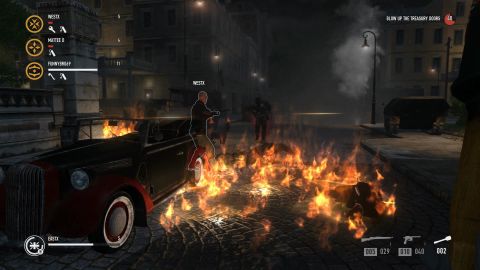PayDay 2 is good fun, but sometimes you want to fight bad guys instead of robbing banks. RAID: World War II takes the co-op shooting gameplay of PayDay back in time to World War II, complete with a few improvements on the original formula.
A team of heroes out to stop the war
Raid: World War II comes from Starbreeze, the owner of the PayDay series, and Croatian developer Lion Game Lion. The same development studio worked on post-release downloadable content for PayDay 2, so they certainly know the PayDay formula. And they've put that to use with this World War II take on that popular series.

The game opens first with a CG intro, and then with a live-action one. Yes, Starbreeze sprung for live-action cinematics featuring John Cleese (of Monty Python fame, and looking very old) as Control, the leader of an organization dedicated to winning World War II for the Allies. His dialog isn't always funny, but Cleese brings an undeniable charm. RAID also features videos of a comically buffoonish Hitler that play after each game.
Characters, skills, and upgrades
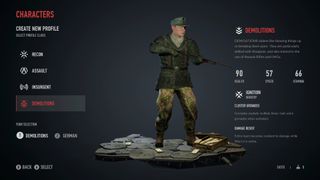
The first thing you'll do in RAID is customize a character. The game offers four classes: recon, assault, insurgent, and demolitions. Notably absent is a medic class, which would be fun to play and differentiate Raid more from PayDay. Each class gets one standard perk and one Warcry-specific perk. Warcry is a move that charges up as you get kills, and grants a temporary bonus (such as increased firing range to the entire team).
You can also select from four skins or characters, each of whom has a brief backstory and unique dialog during missions and in the base. Visual customizations are a weak point, though. You can choose from eight to 10 jackets and pants right now, but that's it. And most of those have to be unlocked over time. As a result, everybody pretty much looks the same.
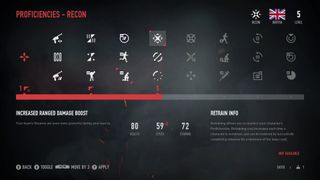
The game features a PayDay-style leveling system in which players earn experience from kills, awards, and completing levels. The more you level up, the more weapons and potential upgrades you unlock. Each time you reach a leveling milestone, you get to select between three new character upgrades, called proficiencies. With a maximum level of 40, there are tons of proficiencies which which to customize and strengthen your hero.
Each weapon can be upgraded, as well. Upgrades all have a challenge that unlocks them, such as scoring 250 hip-fire kills or 50 headshots. Some upgrades are also tied to player level. Between the four classes, proficiencies, and weapon upgrades, RAID has a lot of systems in place to give players freedom and keep them playing for the longterm.
Buff your base
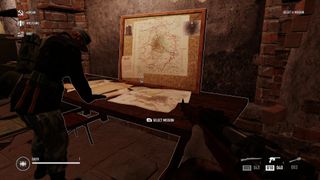
RAID's tutorial is slightly more extensive than PayDay 2's, largely due to this game's more expansive base system. Everyone gets their own personal base from which to conduct operations, customize characters, and more. The characters you're not playing as will occupy the base as NPCs, unless another player has taken on that role – players can visit each other's bases during multiplayer games.
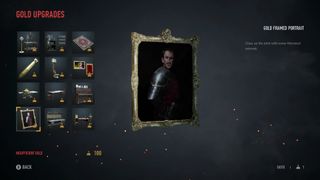
The base, located beneath a bombed-out church, starts out as a run-down wreck. But you can markedly improve its looks by purchasing upgrades. These generally replace a broken fixture like the toilet with a nicer one. Every upgrade costs gold bars. The downside is gold is very slow to come by, and everything costs a minimum of 100 bars. Unless there's some trick to earning gold that I haven't learned, the developers really need to rebalance the base upgrade system.
Besides the various upgrade, character selection, and mission selection stations, you can also view and equip cards at the base. Cards, found as random drops upon completing a mission, modify the gameplay when equipped, increasing both XP and the difficulty.
Completing missions to aid the war effort
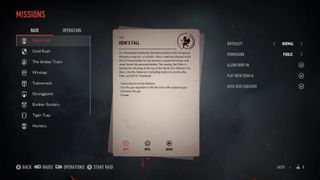
RAID offers two distinct types of missions to play solo or in online co-op: Raids and Operations.
At launch, the game includes nine Raids. These are PayDay 2-style levels in which the team must complete two to five objectives and then escape the area. Only here, instead of robbing banks like Bonnie and Clyde, you're making mischief for the Nazis like the Inglorious Basterds.
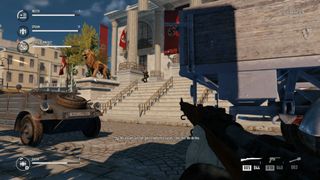
In addition to the main raid levels, RAID also includes two Operations. They're basically mini-campaigns consisting of multiple levels (even some set around your base), so they take a good while to complete. Operations take place in the same maps as Raids, but they're a bit more story-based in nature. The farther you get into one, the more the story develops.
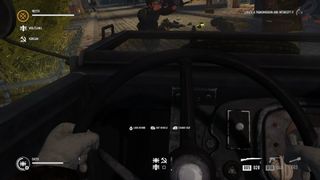
Make no mistake, the actual first person shooter (FPS) gameplay feels exactly like PayDay. But weapons are period-appropriate, and you get to perform cool objectives like blowing up a blimp. You also get to drive escape vehicles, transporting gold to planes, driving around to search for radio signals, and more. The driving controls work well enough, but the poor cockpit camera angle makes navigation harder than necessary.
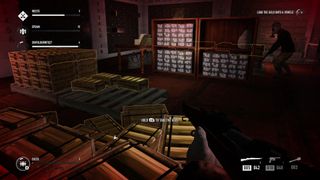
While RAID mostly plays like PayDay, it does add a fun lockpicking minigame. Locked crates and doors can be opened by stopping one or more moving circles in just the right place. A few more deviations from the original formula like that wouldn't hurt, but RAID still plays great.
Bugs and user interface issues
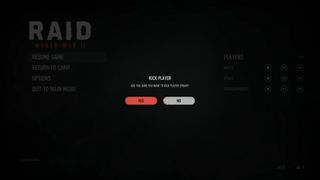
PayDay games are known to be buggy. Even though RAID technically comes from a different developer than the base PayDay 2 game, it's just as bug-ridden. Textures and especially character models glitch out at times; you're bound to spot a teammate's head moving in impossible directions.
More distressingly, during the second Clear Skies operation, one of the Nazi officers we needed to kill never spawned. Everyone eventually had to give up and abandon the level. Hopefully the developers will at least squash the game-breaking bugs via future updates.
As for the UI, it's pretty clear that Lion Game Lion's designers are PC gamers, not console gamers. Most of the text, whether it's mission briefings or subtitled dialog, is far too small to be comfortably viewed from couch distance. The highlight color for menu options is inconsistent, too, with red sometimes representing your cursor and other times representing the non-highlighted selection. And even moving the cursor to the multiplayer or difficulty options part of the mission selection screen is extremely unwieldy and confusing.
Overall impressions of RAID: World War II
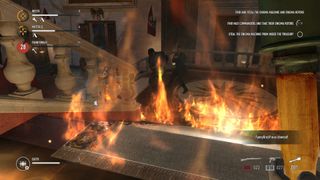
Some of RAID: World War II's Steam reviews complain that it's just PayDay 2 wearing a World War II skin. That's not an unreasonable observation, but it's also clearly the point of the game. The brand may be different, but the developers and publisher are not. Starbreeze saw an opportunity to extend PayDay's gameplay to a whole different setting, and I'm glad they did.
Raid is terrific fun in co-op, with interesting objectives and fine leveling and upgrade systems. If you're looking for a cooperative multiplayer-focused alternative to this fall's other big World War II game, you can't go wrong with RAID. Let's just hope Starbreeze properly supports the console versions of RAID with updates and DLC this time.
Pros:
- Everyone gets their own upgradable base that other players can visit.
- Four distinct playable classes and lots of upgrades to earn.
- Teaming up with friends to complete missions against the Nazis is super fun.
Cons:
- Lots of bugs, including occasional game-breaking ones.
- Unintuitive menus and tiny text throughout the game.
- This engine is showing its age; RAID isn't pretty.
Raid: World War II costs $39.99 on Xbox One, PlayStation 4, and Steam.
Xbox One review copy provided by the publisher.
Paul Acevedo is the Games Editor at Windows Central. A lifelong gamer, he has written about videogames for over 15 years and reviewed over 350 games for our site. Follow him on Twitter @PaulRAcevedo. Don’t hate. Appreciate!
